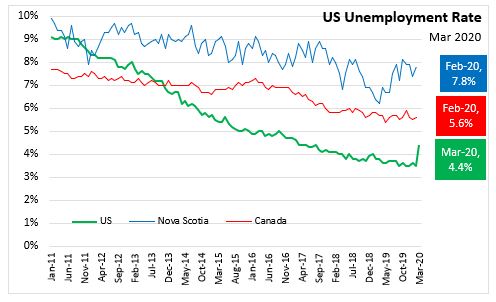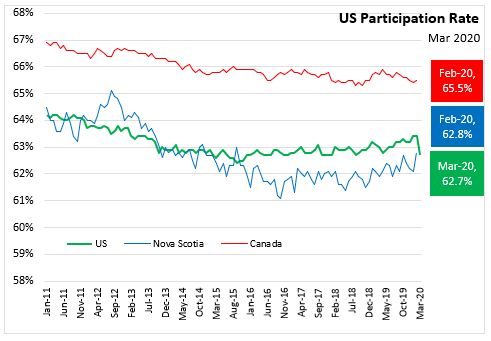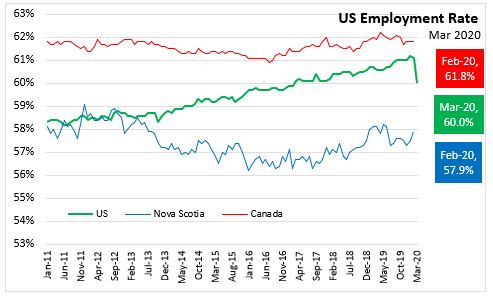The Economics and Statistics Division maintains archives of previous publications for accountability purposes, but makes no updates to keep these documents current with the latest data revisions from Statistics Canada. As a result, information in older documents may not be accurate. Please exercise caution when referring to older documents. For the latest information and historical data, please contact the individual listed to the right.
<--- Return to Archive
For additional information relating to this article, please contact:
April 03, 2020US EMPLOYMENT, MARCH 2020 The US Bureau of Labor Statistics reports today that US non-farm payroll employment decreased sharply by 701,000 in March. The average growth of the previous twelve months non-farm payroll employment was 196,000. The change in measures shows the first effect of COVID-19 and the measures to control it. US employment decline in leisure and hospitality by 459,000, mainly in food services and drinking places (-417,000), this decline approximately offset the gains in the previous 2 years.
US employment declines in March were reported for the other sectors: health care and social assistance (-61,000), professional and business services (-52,000), retail trade (-46,000), construction (-29,000), accommodation (-29,000), other services (-24,000), Mining (-6,000), and manufacturing (-18,000). Employment increased in Federal government sector (+18,000) reflect hiring for the US Census 2020. There was little change in the other major sectors of the economy: wholesale trade, transportation and warehousing, information, and financial activities.
The reference week for the US household survey was March 9th through March 14th and establishment survey was based on pay periods that include March 12th, both periods predate many coronavirus-related business and school closures in the second half of the month. Collection methodologies were also effected in both surveys without in-person survey collection for the US Household Survey and closures of telephone data collection for the Establishment survey; response rates were lower by around 10 percentage points compared to average. An atypical number of persons reported being employed but absence from work due to “other reasons” which would result in unemployment rate being almost 1 percentage point higher if they were to be classified as unemployed or on temporary layoff.

The US unemployment rate was increased 0.9 percentage points to 4.4 per cent in March. This monthly increase is the largest since 1975.

The US participation rate decreased 0.7 percentage point to 62.7 per cent in March. The decline in participation rate in the US could partially reflect people exiting labour market activity completely during the crisis with people that have lost jobs not looking for work.

The US employment to population ratio was down 1.1 percentage points to 60.0 per cent in March. The US employment rate has maintained a very gradual upward trend since the middle of 2013 and declined sharply in March 2020 due to COVID-19. Data for Canada and Nova Scotia Labour Force Survey March 2020 will be released on April 9, 2020.

Note: Canadian and US labour force statistics refer to different working-age cohorts.
Source: US Bureau of Labor Statistics, Statistics Canada Table 14-10-0287-02
<--- Return to Archive